Tomatoes are a fun and common plant to find in a gardener’s backyard. They grow pretty easily and without much fuss. However, there are a lot of tips for growing tomatoes that can significantly increase your yield this summer! Read on for a summer’s worth of tomato growing tips.
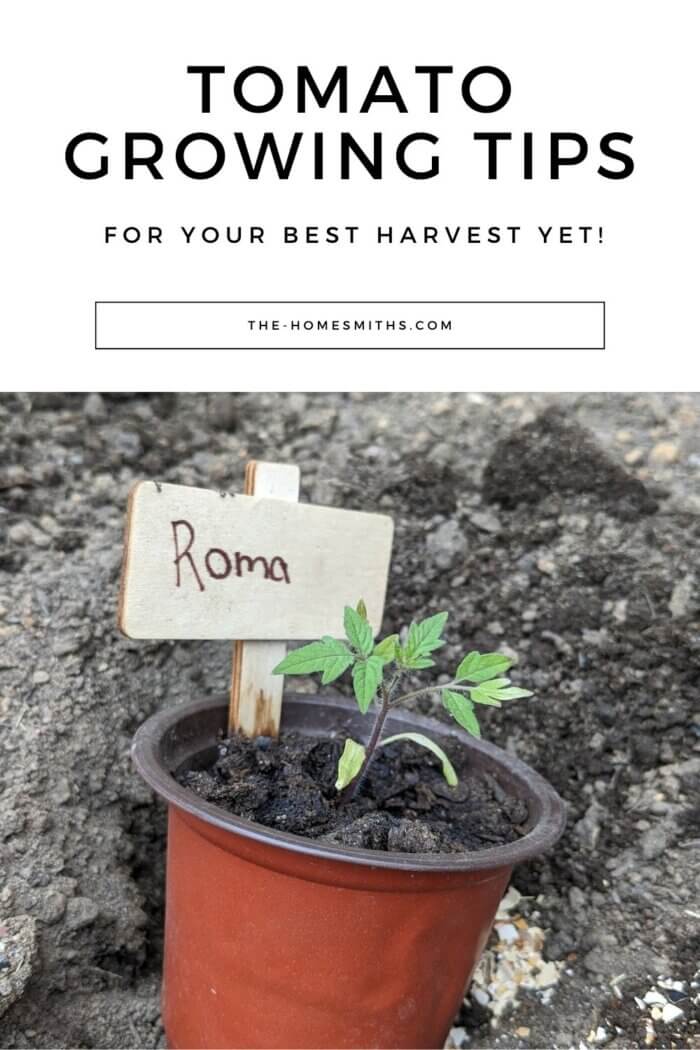
Tomato plants make up a large portion of our vegetable garden. The first few years I grew around 4 plants, but in the first year of being extremely intentional with gardening, I grew 8 tomato plants, the next year I grew 22, and this year we have mapped out 34 tomato plants for our garden. Check out what tomato plants we grew last year!
The 34 tomato plants that we are planning for this year encompass 13 varieties. We sat down in February to figure out our garden plan and determine exactly how many we could grow, which varieties we wanted to repeat from last year, and what new ones we wanted to try.
Here are tips, tricks, and facts that I’ve learned and gathered about growing tomatoes. Hopefully, these help you as you start your tomato garden this year! A lot of this information we learned from The Vegetable Gardener’s Bible. Other tips we learned from Youtube channels, friends, or more experienced gardeners!
Tomato Growing Tips: Facts about Tomatoes
Perhaps controversial, but the first fact about tomatoes is that they are indeed a fruit and not a vegetable. They are a fruit because they contain seeds and grow from the flower of the plant.
Tomatoes can be determinate or indeterminate. Determinate tomatoes are tomato plants that will produce a set amount of individual fruits as determined by their genetics. An indeterminate tomato plant will produce tomatoes until the plant itself dies, typically from a frost or disease. We only grow indeterminate tomatoes in our garden.
Tomato Growing Tips: Starting seedlings indoors
Starting seedlings indoors 6-7 weeks before planning to plant outdoors. Plant the seeds about a half inch deep and an inch apart from each other.
Keep them warm! (This is a theme for tomatoes)
If your tomato seedlings are turning purple, they need phosphorus. Fertilize the seedlings every two weeks, unless your seed-starting soil contains at least 50 percent compost.
When true leaves appear, you will want to transfer to a larger pot. When you up-pot the tomatoes, plant the seedling into the soil so that most of the stem is buried. Tomatoes are vining plants and will grow roots wherever the stem touches the soil.
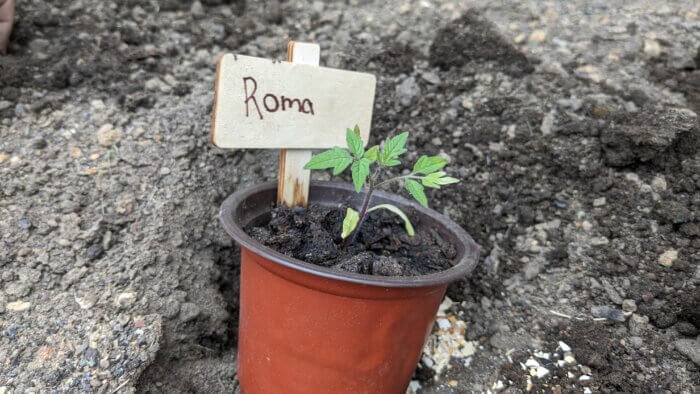
Tomato Growing Tips: Transplanting
Temperature
Make sure the soil is warmed before transplanting outdoors. A way to speed this up is to cover the bed with black plastic, like a trash bag, a couple of weeks before transplanting. The soil should be at least 55 degrees when transplanting.
The forecast should also show that evening temperatures won’t go below 45 degrees. Tomatoes need a lot of sun and are highly sensitive to the cold.
Location
Tomatoes are great to plant next to asparagus, basil, anything in the cabbage family, carrots, celery, chives, cucumber, garlic, lettuce, marigold, mint, onions, or parsley. We always plant marigolds among the tomatoes because it’s known to ward off pests.
Tomatoes are not good to plant near dill, fennel, pole beans or potatoes.
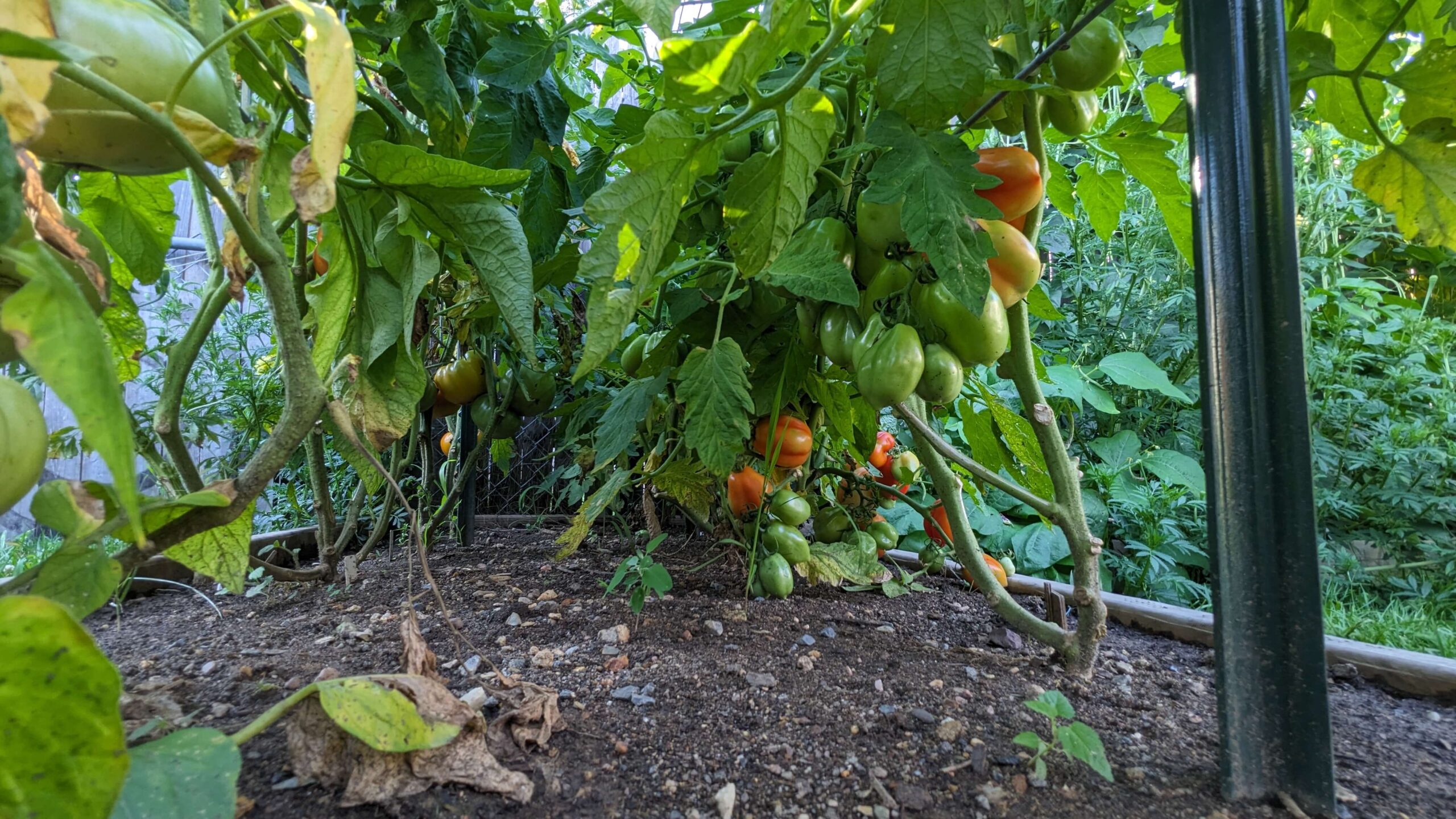
Planting/Transplanting Tips
Harden off the plants for at least two weeks before planting them outdoors. Meaning, move them outdoors to a sheltered place increasing outside time a little bit each day.
Being a vining plant, when transplanted outdoors, plant tomatoes deeply, up to the first set of leaves or about 6 inches. Cut off any leaves that would be buried to help prevent disease. This helps keep the plant healthy and strong.
Make sure there is space for air to circulate between the plants, especially in a humid environment to help decrease the risk of diseases.
These tomatoes can technically grow crawling along the ground but most people do not have the space for it so they train the tomatoes. You can use a stake, cages, or twine on a trellis. (I have tomato cages for some and a cattle panel trellis that I tie the others to.)
Tomato Growing Tips: Summer Growth
Compost the soil before planting. Some people put a raw egg in the hole with the tomato when they transplant. I’ve heard others put bone meal or even fish guts in the hole with the tomato transplant.
Water tomatoes a moderate to high amount during growth but a low amount during the harvest season. Because tomato plants can grow large over a long time, they do need fertilization every couple of weeks.
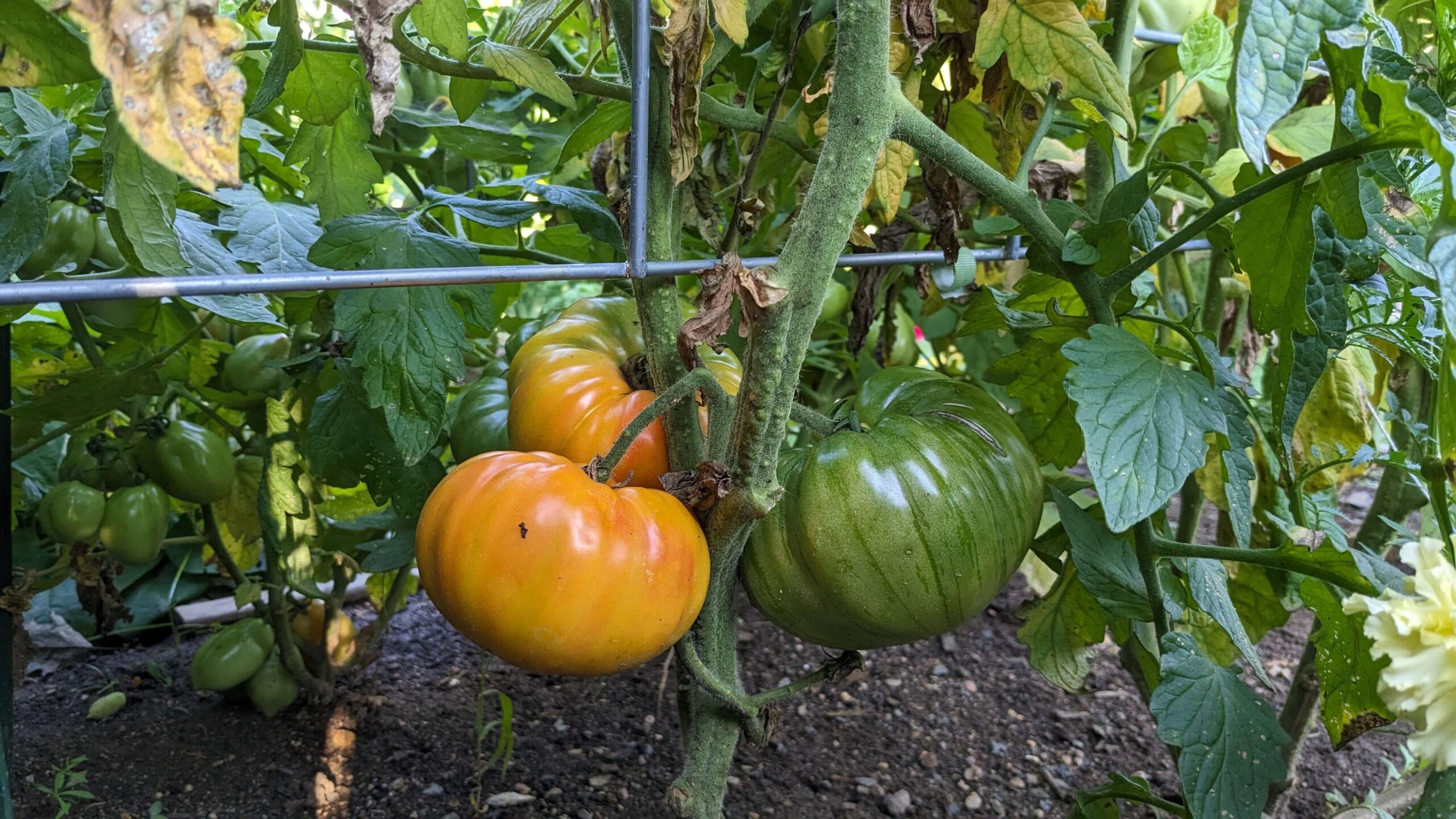
Pruning Tomatoes
Pruning tomatoes is important for the growth of tomato plants and should be done weekly. Don’t start until after the plant has been established in the garden for about a week. If you don’t prune the plant, then the tomato plant will grow multiple main stems. This results in a plant that is spending too much energy on growth instead of setting fruit on the one main stem.
Pruning is removing the suckers from the plant. Suckers are the stems that grow between the main stem and leaves. These suckers can be rooted and grown as new plants identical to the parent if you find yourself wanting more plants.
When removing the suckers, make sure to use a clean and sharp tool. If the suckers are small enough, you can remove them with your hands.
Tomato Growing Tips: Harvesting Tomatoes
Tomatoes ripened on the vine always taste the best but if you’re approaching your frost date in the fall, prepare to pick them sooner. Tomatoes can ripen on a counter as long as they have started to change their color outside or when the tomato gives with slight finger pressure. Additionally, if the tomatoes are nearly ready and you are expecting a large rain storm, I recommend pulling the tomato early so that it doesn’t burst from water retention.
As you are approaching the harvest time for tomatoes, decrease how much you water them. The best time of day to pick tomatoes is in the afternoon of a warm, dry day. This helps the sugars in the tomato to concentrate.
If the tomatoes are ready to be harvested but are not easily coming off of the vine, clip them with a sharp tool so that you don’t damage the plant! We store our tomatoes on the counter in the kitchen away from direct sunlight. They only go in the fridge as a last resort.
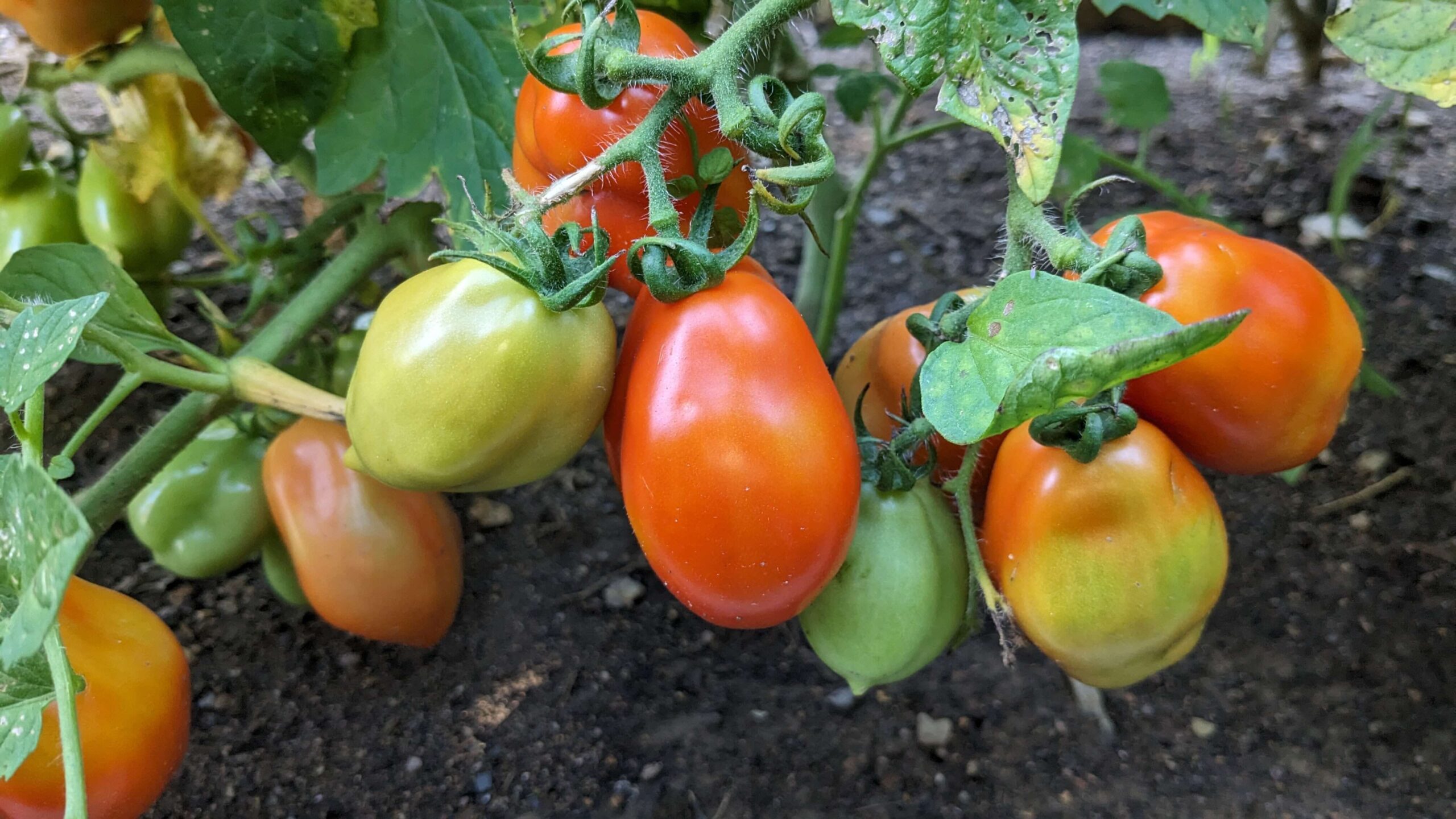
We hope that this tomato growing guide is informative and helpful to you. We love our garden and hope that you enjoy the process and experience a bountiful harvest of tomatoes. Let us know in the comments what your favorite tips for growing tomatoes are!
Save it for later!
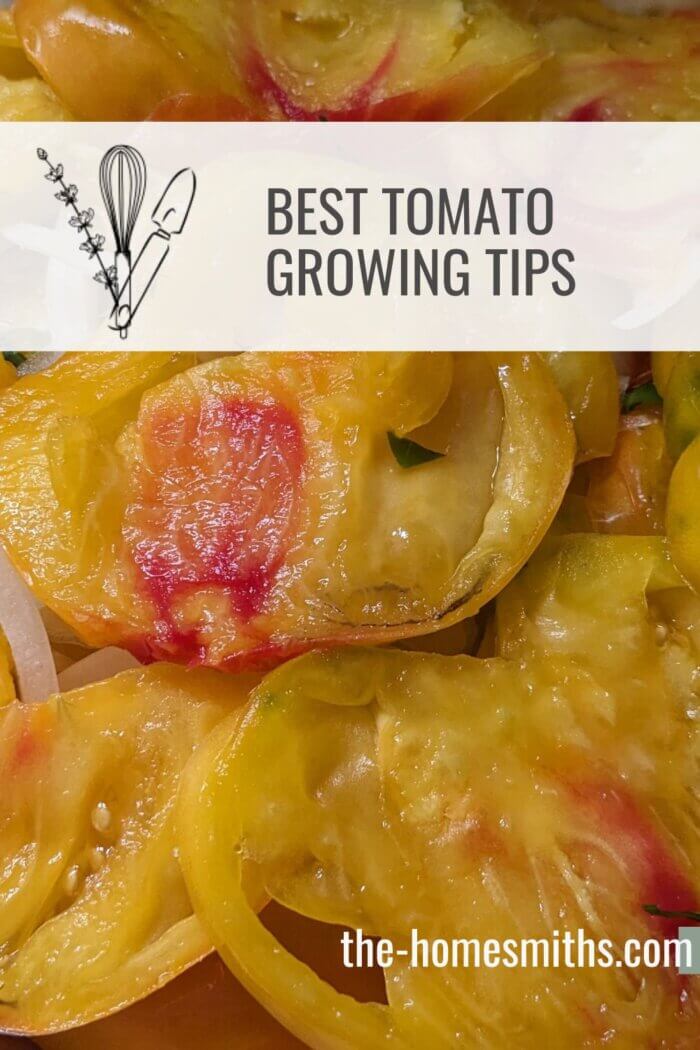

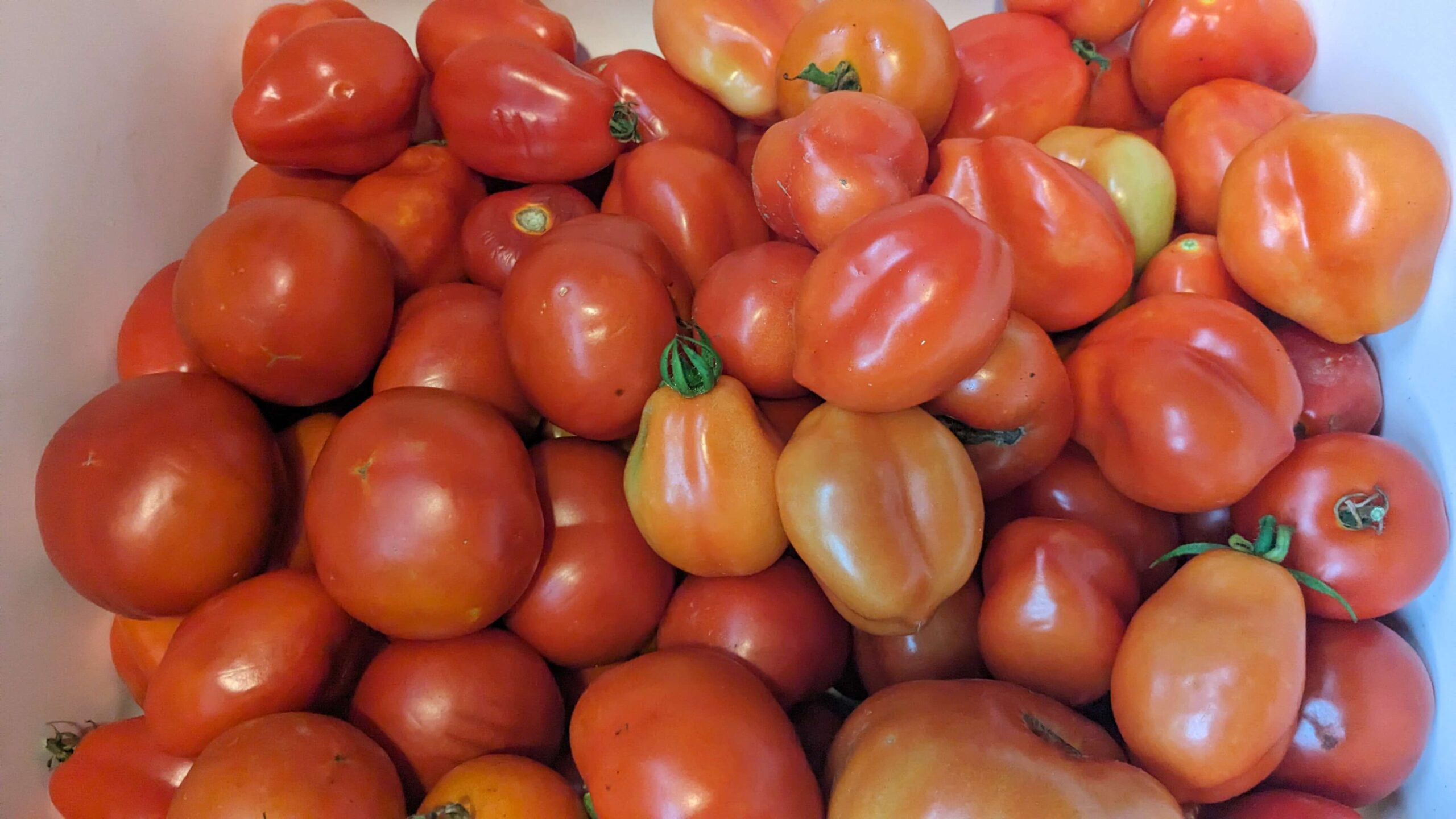
Tomatoes are our garden favorite! We live in Central Florida so we start seeding in December/January to get ahead of bugs. Totally will be trying tge egg in the hole!
I hope you find it helpful! Some people put the whole egg in and leave it, others crack it to make sure that it can fully absorb into the soil. Good luck!
I have never had much luck with tomatoes. I will be saving this for future reference. 😁
I hope this helps!
Great information! Thanks for sharing!
Thank you!
There’s so much great information in this post! I didn’t know I was not supposed to water them heavily when the harvest approaches. I always thought the more the better. Thanks for clearing that up!
I hope you get to experience the difference! I love tomato season.
We always struggle with our tomatoes up here in zone 3! I’ve learned to utilize mostly determinate varietals for sauce making and have one or two indeterminate a for the cherry and the beefsteak varieties throughout the summer.
Do you have a favorite that you plant every year? We love the Amish Paste Roma!
That’s so interesting! I’ve never really thought about the need for determinate vs indeterminate due to zones! I love Amish Paste tomatoes for sauce. Almost all of our individual amish paste grow to around 1 pound. Old german are another favorite for the taste but also because it’s beautiful!
Super informative thanks!!! Loved the marigold tip i will be trying that!
Thank you! I hope you find it helpful!
Great tips! Tomatoes are one of the staple crops I grow. I always put an egg in the hole when planting, prune constantly for airflow, and interplanet calendula, marigold, basil, and parsley.
Yes! I always forget to plant parsley but I love specifically interplanting basil and marigolds. I use white marigolds because when they bloom, the white is a beautiful contrast to the reds of the tomatoes!